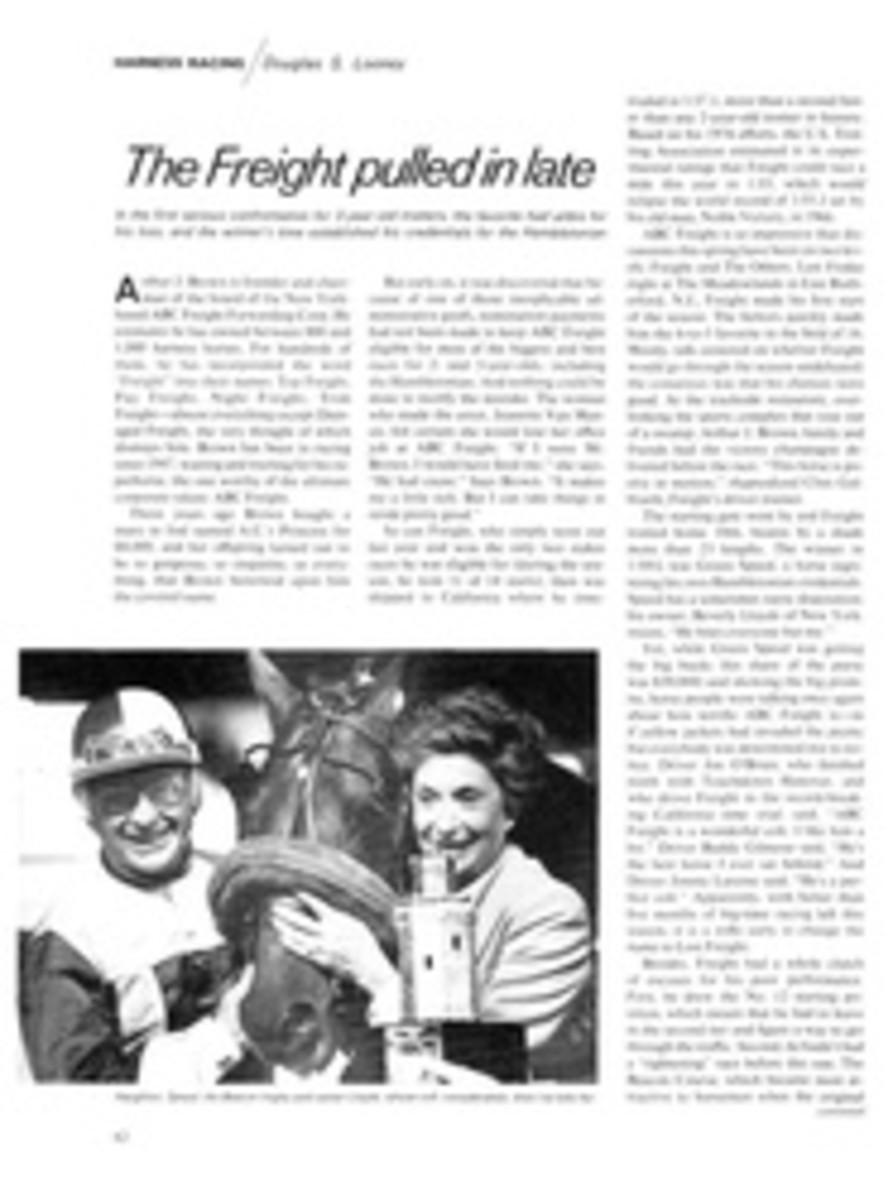
MOTORIZED HANG GLIDERS ARE HERE, BUT THE HANG-UP IS IN THE ASSEMBLY
Volmer Jensen of Glendale, Calif. is the ultimate backyard tinkerer. Now 67, he has devoted a lifetime to designing and building planes. And although he has only a high school education, he has put together 24 aircraft, among them two airplanes, 12 sailplanes and an amphibian he's flown the equivalent of five times around the world. His forte, though, is foot-launched, foot-landed craft. He became fascinated with them in 1925 when he read about something called a "monoplane glider" in a book entitled Boy Mechanic. The next year he built his first hang glider. There have been five in all. Jensen's latest creation is the VJ-24E Sunfun, a rigid-wing hang glider with a motor. The idea, which took 14 months to perfect, was to attach a standard go-cart engine and a 28-inch wooden propeller to the original motorless Sunfun that he completed in 1975. The results may change the sport of hang gliding.
Instead of waiting at the top of a hill to catch an air current and then taking off, the flier simply lifts the 131-pound craft by its fuselage, pulls the starter cord and begins running into a five mph wind, the minimum velocity he needs to get air borne. Within a few steps he is in flight, even from a level field. Once up, the flier turns off the engine and drifts with the breeze just as though he were flying a motorless hang glider.
There is one obvious drawback to the motorized Sunfun. With a 10 hp McCulloch engine (a slightly larger version of a chain-saw motor) screaming a few feet behind one's head, there isn't so much soar as buzz saw. Anyone who forgets to wear earplugs is in for the Excedrin headache of his life.
The Sunfun is considerably more elaborate than the ubiquitous kite hang glider, usually known as a Rogallo wing. Capable of carrying a person weighing up to 200 pounds, the Sunfun looks like a small World War I plane and has an 18-foot tail and a 36-foot wingspan. Instead of controlling it with body English, one maneuvers a control stick to manipulate ailerons, elevators and a rudder. Although not absolutely necessary, Jensen recommends that those who have never flown an airplane practice an hour or two in a stick-controlled light aircraft before trying the VJ-24E.
Jensen claims the Sunfun is safer and more efficient than the kite, and even simpler to master. But assembling one is something else again. The VJ-24E is sold only by mail and. in putting it together, it helps to have the combined mechanical know-how of the Wright brothers. The first step is easy. Assemble $130 and send it to Volmer Aircraft, Box 5222, Glendale, Calif. In return you will get a set of blueprints which, to the casual hang-gliding enthusiast, will be as simple to decipher as the Rosetta Stone. Next, one mails $950 to DSK Aircraft in Van Nuys, Calif. to get the Sunfun raw materials, except for the engine, which is available at go-cart dealers for another $200. Now, a few common household tools like an electric drill and a hacksaw will help, not to mention a pop riveter and a drill press. It should only take about 200 hours to assemble your Sunfun. (Jensen refuses to manufacture the VJ-24E himself because "I don't like to make two of anything.") So despite the Sunfun's advantages, the less mechanically inclined flier will probably have to settle for the Rogallo wing.

